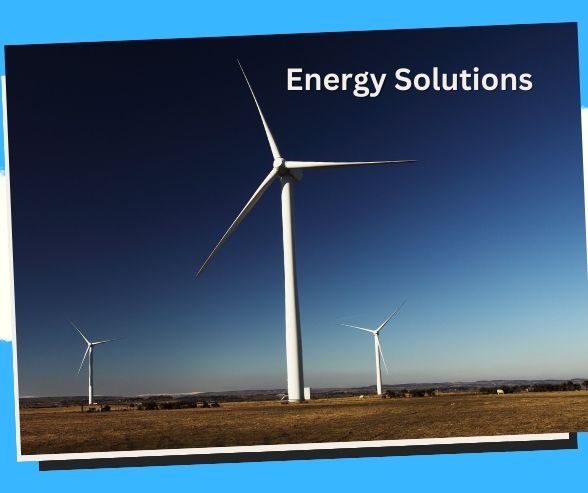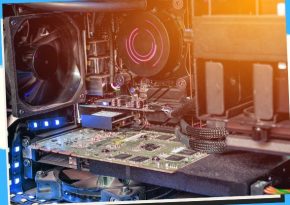
Take Control of Your Energy: DIY Wind Turbine Projects for Homeowners
Say goodbye to high electricity bills and hello to sustainability with our step-by-step DIY wind turbine plans tailored for homeowners.
Harnessing the Wind: A Step-by-Step Guide to Building Your Own DIY Wind Turbine for Home Use
Wind energy is a clean and renewable resource that holds immense potential for powering homes sustainably. In this comprehensive guide, we’ll walk you through the process of building your very own DIY wind turbine for home use. From gathering materials to assembly and installation, we’ve got you covered every step of the way. Let’s harness the power of the wind together! 🌬️🏡
Understanding Wind Energy
Before diving into the construction of a DIY wind turbine, it’s essential to understand how wind energy works. Wind turbines convert the kinetic energy of wind into mechanical power, which can then be converted into electricity. By harnessing the power of the wind, you can generate clean and renewable energy to supplement or even replace traditional energy sources.
Assessing Your Location
The success of a DIY wind turbine project depends significantly on your location and the availability of consistent wind resources. Ideally, your home should be situated in an area with a relatively constant and strong wind flow. Conduct thorough research or consult with local meteorological data to assess the wind potential in your area before proceeding with the project.
Gathering Materials
Building a DIY wind turbine requires several key components, many of which can be sourced from local hardware stores or online suppliers. Here’s a basic list of materials you’ll need:
- PVC pipes or metal tubing for the turbine blades and frame
- Generator or alternator to convert mechanical energy into electricity
- Bearings and hub assembly for mounting the blades
- A tower or mast for supporting the turbine
- Wiring, connectors, and electrical components for connecting the turbine to your home’s electrical system
Designing Your Turbine
The design of your DIY wind turbine will depend on various factors, including the available materials, your budget, and your energy requirements. Consider factors such as rotor diameter, blade shape, and tower height when designing your turbine. You can find plenty of online resources, tutorials, and DIY plans to guide you through the design process.
Building the Turbine Blades
The blades are arguably the most critical component of a wind turbine, as they capture the wind’s energy and convert it into rotational motion. You can construct turbine blades using PVC pipes, wood, or even recycled materials like old plastic bottles. Experiment with different blade designs and sizes to find the optimal configuration for your turbine.
Assembling the Turbine
Once you have all the components ready, it’s time to assemble your DIY wind turbine. Start by mounting the blades onto the hub assembly and securing them in place. Next, connect the hub assembly to the generator or alternator, ensuring proper alignment and spacing. Finally, assemble the tower or mast and install the turbine at an elevated location with good exposure to the wind.
Safety Considerations
Safety should always be a top priority when working on DIY projects, especially those involving electrical components and elevated structures. Take necessary precautions to avoid accidents and injuries during the construction and installation of your wind turbine. If you’re unsure about any aspect of the project, seek guidance from experienced individuals or professionals.
Testing and Calibration
Before connecting your DIY wind turbine to your home’s electrical system, it’s essential to test and calibrate the system to ensure optimal performance. Conduct a series of tests to measure the turbine’s output under different wind conditions and make any necessary adjustments to improve efficiency and stability.
Integration with Your Home
Once your DIY wind turbine is up and running smoothly, it’s time to integrate it with your home’s electrical system. Consult with a qualified electrician to ensure a safe and proper connection to your home’s wiring and electrical panel. Consider installing a charge controller and battery storage system to store excess energy for use when the wind isn’t blowing.
Maintenance and Upkeep
To keep your DIY wind turbine operating efficiently, regular maintenance is essential. Inspect the turbine blades, bearings, and electrical components periodically for signs of wear or damage. Keep the turbine and tower clean and free of debris to prevent performance degradation. Address any maintenance issues promptly to avoid costly repairs or downtime.
Benefits of Building a DIY Wind Turbine for Home Use
- Clean Energy Generation: DIY wind turbines harness the power of the wind to generate electricity without emitting harmful pollutants, contributing to a cleaner environment.
- Cost Savings: By generating their own electricity, homeowners can significantly reduce or even eliminate their monthly utility bills, leading to long-term cost savings.
- Energy Independence: Building a DIY wind turbine grants homeowners greater energy independence, reducing reliance on external energy sources and volatile energy markets.
- Minimal Environmental Impact: Compared to traditional power generation methods, wind energy production has minimal environmental impact, preserving natural resources and ecosystems.
- Scalability: DIY wind turbines can be scaled to meet the specific energy needs of individual homeowners, making them suitable for a wide range of property sizes and locations.
- Educational Opportunity: Building a DIY wind turbine offers valuable learning experiences in renewable energy technology, empowering homeowners with practical skills and knowledge.
- Resilience: Wind energy systems can provide a reliable source of power, especially during grid outages or natural disasters, ensuring the continuity of essential services.
- Community Engagement: DIY wind turbine projects can foster community engagement and collaboration, as neighbors come together to explore sustainable energy solutions.
- Aesthetic Appeal: Well-designed wind turbines can enhance the visual appeal of a property, serving as a symbol of environmental stewardship and innovation.
- Contribution to Climate Action: By generating clean energy locally, DIY wind turbine owners contribute to global efforts to mitigate climate change and reduce carbon emissions.
Case Studies: Real-Life Examples of DIY Wind Turbines in Home Use
- The Smith Family Homestead: The Smith family built a DIY wind turbine on their rural property, generating enough electricity to power their entire home and farm operations.
- Urban Wind Turbine Project: In a densely populated urban neighborhood, a group of homeowners collaborated to build a community-owned wind turbine, providing renewable energy for multiple households.
- Off-Grid Living: Off-grid homeowners, such as the Johnsons, rely on DIY wind turbines to meet their energy needs in remote locations where traditional power lines are unavailable or cost-prohibitive.
- School Renewable Energy Initiative: A high school science class embarked on a project to build a small-scale wind turbine, integrating renewable energy education into their curriculum and powering campus facilities.
- Coastal Wind Power: Coastal homeowners like the Garcias capitalize on consistent ocean breezes by installing DIY wind turbines, supplementing their energy needs with reliable wind power.
- Retrofitting Existing Structures: The Petersons retrofitted their existing barn with a DIY wind turbine, repurposing the structure to generate clean energy while preserving its historical integrity.
- Emergency Preparedness: DIY wind turbines serve as crucial components of emergency preparedness plans for homeowners like the Browns, providing backup power during emergencies and natural disasters.
- Rural Electrification: DIY wind turbine projects, supported by government initiatives, bring electricity to underserved rural communities, improving quality of life and economic opportunities.
- Offshore Wind Farm: Innovative homeowners in coastal regions explore offshore wind turbine installations, capitalizing on expansive water bodies for wind energy production.
- Renewable Energy Advocacy: Homeowners like the Carters advocate for renewable energy policies and incentives, showcasing the benefits of DIY wind turbines as sustainable energy solutions.
Key Takeaways for DIY Wind Turbine Builders
- Assess Your Wind Resources: Conduct a thorough wind assessment to determine the suitability of your location for wind energy production.
- Choose the Right Turbine Design: Select a DIY wind turbine design that matches your energy needs, skill level, and available resources.
- Gather Quality Materials: Invest in high-quality materials and components for your DIY wind turbine to ensure durability and performance.
- Follow Safety Guidelines: Prioritize safety throughout the construction process, adhering to recommended safety practices and guidelines.
- Optimize Turbine Placement: Position your DIY wind turbine in an area with unobstructed airflow and minimal turbulence to maximize energy production.
- Regular Maintenance is Key: Implement a regular maintenance schedule to keep your DIY wind turbine in optimal condition and maximize its lifespan.
- Monitor Performance: Track the performance of your DIY wind turbine to identify any issues or opportunities for improvement.
- Educate Yourself: Continuously educate yourself about wind energy technology, advancements, and best practices to enhance your turbine’s efficiency.
- Engage with the Community: Share your experiences and knowledge with fellow DIY wind turbine builders, fostering a supportive community of renewable energy enthusiasts.
- Celebrate Your Contribution: Celebrate the success of your DIY wind turbine project and the positive impact it has on the environment and your energy independence.
FAQ: Answering Common Questions About DIY Wind Turbines
- Q: How much wind do I need to generate electricity with a DIY wind turbine?
A: Generally, a minimum average wind speed of 5-6 meters per second is recommended for effective electricity generation with a DIY wind turbine. - Q: Are DIY wind turbines difficult to build?
A: While building a DIY wind turbine requires some technical skill and knowledge, numerous online resources and guides are available to assist enthusiasts at various skill levels. - Q: How much does it cost to build a DIY wind turbine?
A: The cost of building a DIY wind turbine can vary depending on factors such as size, materials, and availability of components, but it is often significantly cheaper than purchasing a commercial turbine. - Q: Can I connect my DIY wind turbine to the grid?
A: Yes, with the appropriate grid-tie equipment and permits, DIY wind turbine owners can connect their systems to the grid, potentially earning credits for excess electricity generated. - Q: What maintenance is required for a DIY wind turbine?
A: Regular maintenance tasks for DIY wind turbines may include lubricating moving parts, inspecting for wear or damage, and cleaning the turbine blades. - Q: How noisy are DIY wind turbines?
A: Properly designed and installed DIY wind turbines are relatively quiet, especially compared to older models. Noise levels can vary depending on turbine design and wind speed. - Q: Can I use a DIY wind turbine in conjunction with solar panels?
A: Yes, combining wind and solar power systems can provide a more consistent and reliable energy supply, especially in locations with varying weather patterns. - Q: Are there any legal requirements or permits needed to build a DIY wind turbine?
A: Yes, depending on your location, you may need to obtain permits or approvals from local authorities before constructing a DIY wind turbine. It’s essential to research and comply with relevant regulations and zoning ordinances. - Q: Can I store excess energy generated by my DIY wind turbine?
A: Yes, homeowners can store excess energy using battery storage systems, allowing them to utilize the generated electricity when wind conditions are unfavorable or during power outages. - Q: How long does it take to recoup the investment in a DIY wind turbine?
A: The payback period for a DIY wind turbine depends on various factors such as initial investment, energy savings, and local electricity rates, but it typically ranges from 5 to 15 years.
Conclusion: Empowering Homeowners with DIY Wind Energy Solutions 🌬️
Building your DIY wind turbine for home use is a rewarding and environmentally friendly project that can significantly reduce your reliance on traditional energy sources. By harnessing the power of the wind, you can generate clean and renewable electricity right in your backyard. With careful planning, construction, and maintenance, you can enjoy the benefits of sustainable energy for years to come. Start your wind energy journey today and power your home with the breeze! 🌬️🏠
Key Phrases
- DIY wind turbine
- Home energy
- Renewable energy
- Wind power
- Sustainable living
- Eco-friendly home
- Clean energy
- Turbine construction
- Energy independence
- Green technology
Hashtags
- #DIYWindTurbine
- #HomeEnergy
- #RenewableEnergy
- #WindPower
- #SustainableLiving
- #EcoFriendlyHome
- #CleanEnergy
- #TurbineConstruction
- #EnergyIndependence
- #GreenTechnology
Save/Share this story with QR CODE
Disclaimer
This article is for informational purposes only and does not constitute endorsement of any specific technologies or methodologies and financial advice or endorsement of any specific products or services.
📩 Need to get in touch?
📩 Feel free to Contact NextGenDay.com for comments, suggestions, reviews, or anything else.
We appreciate your reading. 😊Simple Ways To Say Thanks & Support Us:
1.) ❤️GIVE A TIP. Send a small donation thru Paypal😊❤️
Your DONATION will be used to fund and maintain NEXTGENDAY.com
Subscribers in the Philippines can make donations to mobile number 0917 906 3081, thru GCash.
3.) 🛒 BUY or SIGN UP to our AFFILIATE PARTNERS.
4.) 👍 Give this news article a THUMBS UP, and Leave a Comment (at Least Five Words).
AFFILIATE PARTNERS

World Class Nutritional Supplements - Buy Highest Quality Products, Purest Most Healthy Ingredients, Direct to your Door! Up to 90% OFF.
Join LiveGood Today - A company created to satisfy the world's most demanding leaders and entrepreneurs, with the best compensation plan today.



 Business Technology, Finance Technology & Information Technology
Business Technology, Finance Technology & Information Technology





